
To be listed on the CAMPOSOL TODAY MAP please call +34 968 018 268.

Guidelines for submitting articles to Condado Today
Hello, and thank you for choosing CondadoToday.com to publicise your organisation’s info or event.
Condado Today is a website set up by Murcia Today specifically for residents of the urbanisation in Southwest Murcia, providing news and information on what’s happening in the local area, which is the largest English-speaking expat area in the Region of Murcia.
When submitting text to be included on Condado Today, please abide by the following guidelines so we can upload your article as swiftly as possible:
Send an email to editor@condadotoday.com or contact@murciatoday.com
Attach the information in a Word Document or Google Doc
Include all relevant points, including:
Who is the organisation running the event?
Where is it happening?
When?
How much does it cost?
Is it necessary to book beforehand, or can people just show up on the day?
…but try not to exceed 300 words
Also attach a photo to illustrate your article, no more than 100kb

Convento e Iglesia de San Sebastián, Orihuela
The church and convent of Saint Sebastian, Orihuela
(Order of Agustinas nuns)
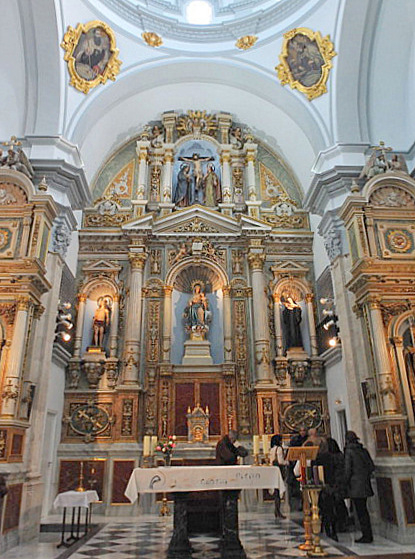 The building we see today has undergone extensive remodelling and rebuilding since the current building was first constructed in this location during the sixteenth century on the site of a small Mediaeval chapel formerly part of the structures associated with the Cathedral del Salvador, the main cathedral in Orihuela. In 1591 the chapel and site was donated by the Cabildo for the construction of the Convento de Agustinas.
The building we see today has undergone extensive remodelling and rebuilding since the current building was first constructed in this location during the sixteenth century on the site of a small Mediaeval chapel formerly part of the structures associated with the Cathedral del Salvador, the main cathedral in Orihuela. In 1591 the chapel and site was donated by the Cabildo for the construction of the Convento de Agustinas.
This convent was built outside of the old city walls and would once have been surrounded by orchards and agricultural exploitations, before being swallowed up by urban construction.
 During 20th century restoration work some of the original Gothic columns of the first chapel were discovered and a small fragment of these can be seen near to the main entrance of the church.
During 20th century restoration work some of the original Gothic columns of the first chapel were discovered and a small fragment of these can be seen near to the main entrance of the church.
In the closed quarters of the convent is a small Baroque cloister, and the main part of the chapel of Saint Sebastian which can be visited is Baroque, most of the visible construction carried out during the second rebuild of the structure which took place after Bishop Juan Elías Gómez de Terán commented in 1737 on the ruinous state of what he described as a structure ”which didn´t warrant being called a church,”and ordered its demolition, the replacement concluded in 1743 during a period of prosperity for Orihuela in which the silk industry flourished and many important convents and private palaces were constructed.( see History of Orihuela for more details about the turbulent history of Orihuela)
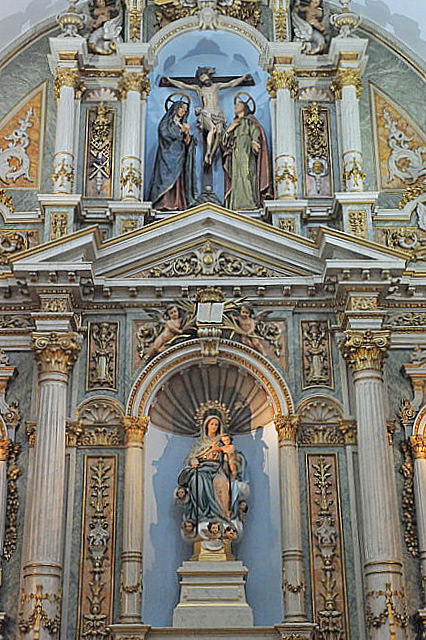 However, outbreaks of cholera and the War of Succession weakened the city, followed by the Torrevieja earthquake of 1829 which caused extensive damage to the historical structures of Orihuela, as well as flattening hundreds of homes nearer to the epicentre of the earthquake. Further turbulence ensued as Orihuela was briefly an independent Canton following the Cantonal revolution of 1873 and then 6 years later a massive flood, the Riada of Santa Teresa, caused incalculable damage to the city and its historical buildings, as well as killing 300 people.
However, outbreaks of cholera and the War of Succession weakened the city, followed by the Torrevieja earthquake of 1829 which caused extensive damage to the historical structures of Orihuela, as well as flattening hundreds of homes nearer to the epicentre of the earthquake. Further turbulence ensued as Orihuela was briefly an independent Canton following the Cantonal revolution of 1873 and then 6 years later a massive flood, the Riada of Santa Teresa, caused incalculable damage to the city and its historical buildings, as well as killing 300 people.
By 1888 the church once again required major restoration under architect D. Ramón Más, followed by further modifications in 1901.
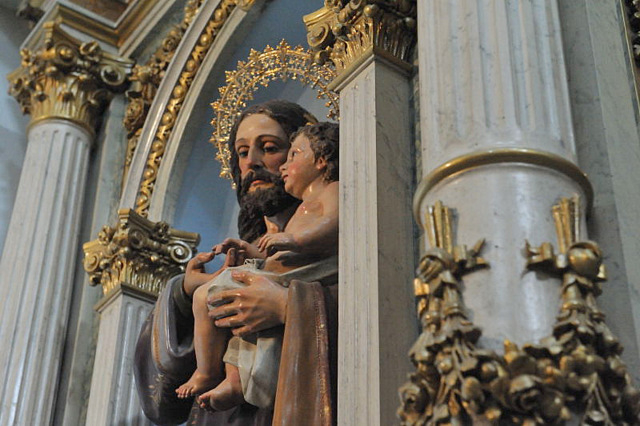 The Civil War resulted in extensive damage to the religious heritage of Orihuela, as indeed it did throughout Spain, and between 1969 and1978 much of the old convent was once again demolished and rebuilt. The last major restoration took place between 2008 and 2010, during which the impressive retablo, or main altar which today dominates the church, was installed.
The Civil War resulted in extensive damage to the religious heritage of Orihuela, as indeed it did throughout Spain, and between 1969 and1978 much of the old convent was once again demolished and rebuilt. The last major restoration took place between 2008 and 2010, during which the impressive retablo, or main altar which today dominates the church, was installed.
This retablo had originally been made for the convento de Santa Susana in Durango, and had been commissioned in 1896 from Vicente Larrea Aldama to replace an older work made by Francisco Martínez de  Arce (1665) and remodelled by Esteban de Vizcarra y Lustarrio (1759), due to the extensive woodworm damage it had suffered. However, the convent was bombed by the Condor Legion, along with the rest of the village on the 31st March 1937, although the retablo stood virtually undamaged as the rest of the church caved in. Basic restoration was undertaken to the church, but after the convent closed, the decision was taken to transfer the retablo to Orihuela, so in 2010 the retablo was dismantled and reconstructed in Orihuela, with restoration work undertaken during the transfer process. It’s an impressive piece, including images of Saint Sebastian, pierced with arrows, and San Agustín holding a church in his hand, viewed as one of the fathers of the modern church.
Arce (1665) and remodelled by Esteban de Vizcarra y Lustarrio (1759), due to the extensive woodworm damage it had suffered. However, the convent was bombed by the Condor Legion, along with the rest of the village on the 31st March 1937, although the retablo stood virtually undamaged as the rest of the church caved in. Basic restoration was undertaken to the church, but after the convent closed, the decision was taken to transfer the retablo to Orihuela, so in 2010 the retablo was dismantled and reconstructed in Orihuela, with restoration work undertaken during the transfer process. It’s an impressive piece, including images of Saint Sebastian, pierced with arrows, and San Agustín holding a church in his hand, viewed as one of the fathers of the modern church.
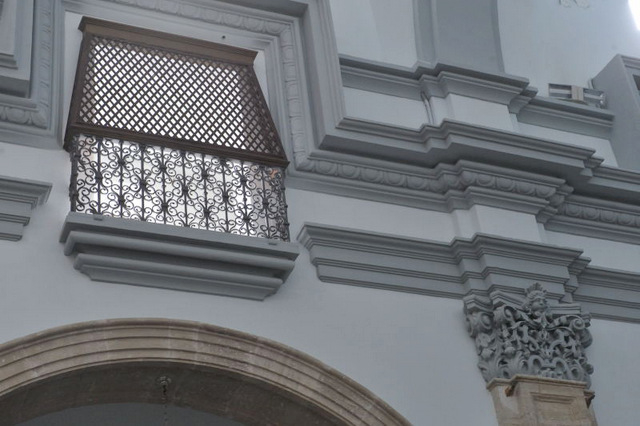 The retablo dominates the church, setting the colour scheme for the remainder, which is a subtle blue and grey finish, a single nave with three lateral chapels , in the third of which, and nearest to the door, can be seen the sepulchre of Sister Juana Gillén, who died in 1607.
The retablo dominates the church, setting the colour scheme for the remainder, which is a subtle blue and grey finish, a single nave with three lateral chapels , in the third of which, and nearest to the door, can be seen the sepulchre of Sister Juana Gillén, who died in 1607.
Other important artworks include oil paintings by Orihuela artist, Antonio Villanueva, from the middle of the 18th century, “Santa Rita de Cascia”, in the lower choir area and the “Virgen de la Correa”, in the upper choir. It’s also interesting to note the grills which separate the church from the convent to which it is joined, enabling the nuns to partake in mass without being seen by the general public.
The convent has a small shop which sells book and religious souvenirs.
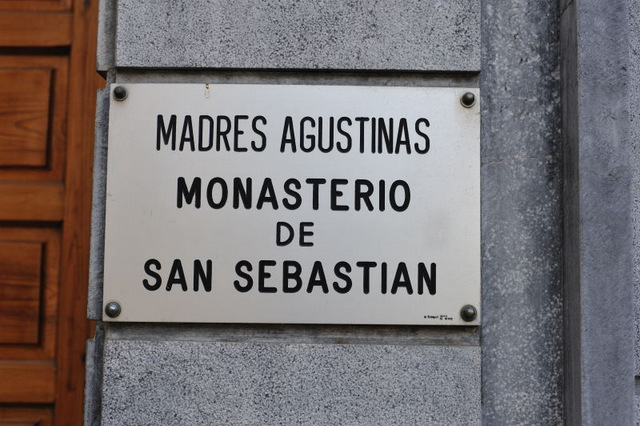 Convento e Iglesia de San Sebastián, Orihuela
Convento e Iglesia de San Sebastián, Orihuela
Plaza de San Sebastián, on the corner of Avenida Duque de Tamames and Calle San Agustín.
Click for map, Calle San Agustín, Orihuela
( NB This is a really pleasant corner in which to stop off for a coffee. The Glorieta Gabriel Miró is lined with pleasant cafés and is a green. tree lined park area. )




































